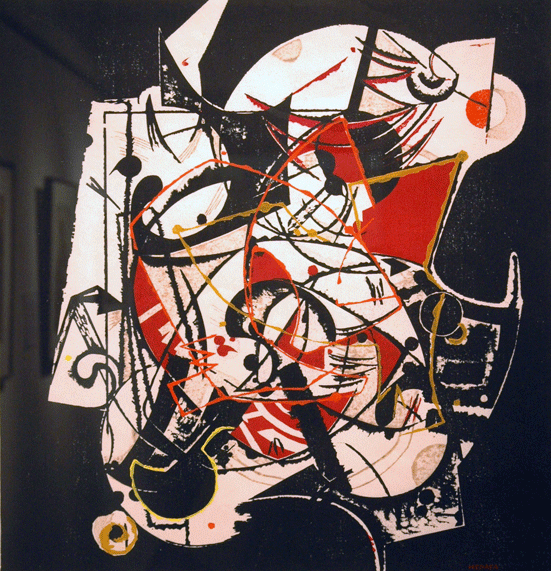Profile of an Ancient Warrior, Hadaka Yoshida, woodblock print, 1958
Yoshida Hodaka started oil painting in 1945 in a time when new freedoms were opening up in Japanese society due to the end of World War II. He began using the woodblock technique in 1951. Hodaka then traveled to United States with his older brother, who was seeking to reestablish ties in the art world for the Yoshida family. After his time in the United States, Hodaka traveled to Mexico, where he got a first hand look at ancient Mayan architecture and artifacts, which helped to inspire him in his own art. The source of this inspiration was in the ancient “life power” of the people that made these works, which he felt was a universal phenomenon that he could apply to such works as “Warrior”.
At first glance this woodblock print appears to be a chaotic maelstrom of lines and blocks of color inspired by a mystical and primordial power. Yet this print is also sophisticated; Yoshida Hodaka uses the white paper as the body of his ancient warrior and has chosen to make the edges blurry to suggest a cave scrawl by an excited primitive. The overall impression of this print is as the title suggests “a profile of an ancient warrior” with the head in the upper right hand corner featuring the topknot a quintessentially Japanese hairstyle reserved for samurai. As the viewer traces this hairstyle with their eyes it forms the profile of another samurai. This warrior’s face is wracked with pain. He screams as blood trickles and spurts from his wounds, yet his closed eyes are at peace. He has fulfilled his purpose and chosen a good day to die, his head sliced off or perhaps scalped? This print inspires reflection on the duality of human strife: although we are inwardly revolted by it, violence affirms our existence.
Paul Bromen and Jason Bossen
